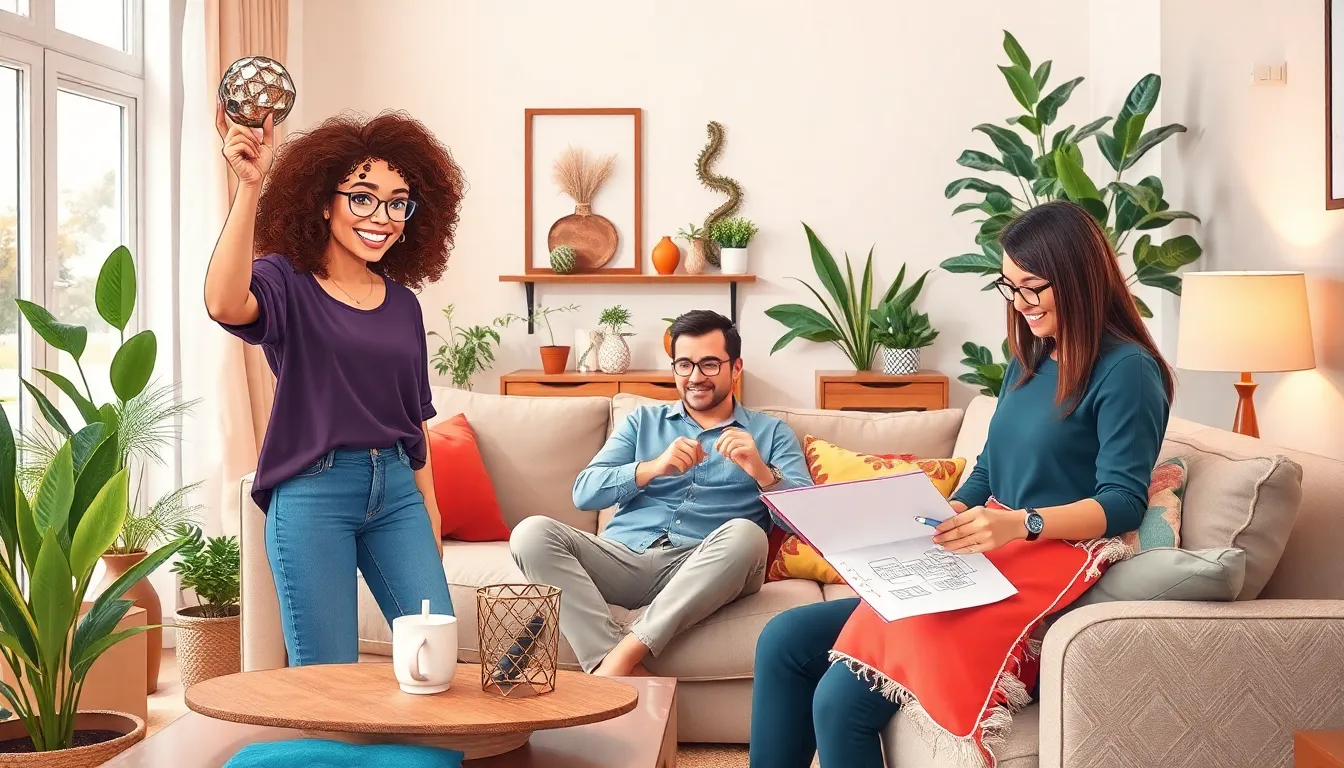Table of Contents
ToggleIn the world of television, cliffhangers reign supreme, keeping viewers on the edge of their seats and craving more. Who doesn’t love that heart-pounding moment when a favorite character faces a life-or-death situation or a shocking revelation leaves jaws dropped? It’s the ultimate tease, and TV writers have mastered the art of suspense like seasoned cliff-divers.
From classic shows to modern hits, the cliffhanger tradition has evolved, but its purpose remains the same: to hook audiences and ensure they return for the next episode. With each dramatic pause and unexpected twist, it’s a rollercoaster ride of emotions that keeps fans buzzing. So grab your popcorn and settle in as we dive into the thrilling world of TV cliffhangers, exploring their impact and why they’ve become a beloved staple of storytelling.
Overview of TV Cliffhanger Tradition
TV cliffhangers serve as powerful narrative devices that keep audiences engaged. They generate suspense by leaving significant story elements unresolved. Often, a character’s fate hangs in the balance, compelling viewers to discuss possible outcomes. With each dramatic end, cliffhangers fuel anticipation for the next episode.
Cliffhangers date back to early serialized storytelling. Classic dramas such as “The Twilight Zone” utilized cliffhangers to pique audience interest. Modern series like “Game of Thrones” and “Breaking Bad” have elevated this tradition, creating highly memorable moments that define seasons. Each cliffhanger introduces a mix of shock, thrill, and curiosity.
Television networks occasionally capitalize on cliffhangers for marketing strategies. They release teasers to amplify viewer curiosity and encourage binge-watching. This tactic generates online discussions, social media buzz, and fan theories.
Involving life-or-death scenarios enhances emotional investment among viewers. Meanwhile, surprising revelations create lasting impact. Engaging storytelling often combines multiple cliffhanger types to maintain rhythm and intensity in the plot. Throughout television history, this tradition continues to adapt while retaining its core purpose of hooking audiences and elevating the overall narrative experience.
Historical Background
Cliffhangers have a rich history in television, captivating audiences since the medium’s inception. Their roots trace back to early serialized storytelling, where suspense often dictated the viewing experience.
Early Examples of Cliffhangers
Serial dramas from the 1930s and 1940s featured cliffhangers prominently. “The Perils of Pauline,” a silent film serial, showcased thrilling finishes often leaving protagonists in dire situations. These cliffhangers encouraged audiences to return, eagerly awaiting resolutions. Similarly, radio serials introduced suspenseful endings, captivating listeners with unresolved storylines. Viewers or listeners couldn’t resist tuning in, highlighting the effectiveness of questioning the fates of beloved characters.
Evolution Through the Decades
By the 1950s and 1960s, television shows began incorporating cliffhangers more consistently. “The Twilight Zone” left audiences pondering its uncanny resolutions, while shows like “Dallas” introduced season-ending cliffhangers that defined modern storytelling. In the following decades, series like “ER” and “Lost” transformed cliffhangers into essential plot devices, enhancing viewer engagement. This evolution reflected a greater understanding of audience dynamics, demonstrating the power cliffhangers hold in today’s narrative landscape. Today, they continue to dominate TV series, fueling viewer anticipation and sparking widespread discussions.
Impact on Audience Engagement
Cliffhangers dramatically enhance audience engagement by fostering emotional connections and anticipation for future episodes. Their strategic use transforms viewing into an interactive experience.
Emotional Investment in Characters
Viewers develop strong emotional ties to characters. Placing characters in perilous situations creates empathy, making audiences deeply care about their outcomes. Unresolved storylines amplify these feelings of anxiety and attachment. When a favorite character faces a life-or-death moment, it evokes genuine concern. Such intensity encourages audiences to bond over shared experiences, sparking conversations about characters’ fates and personal journeys. This emotional investment motivates viewers to return to see how narratives unfold.
Building Anticipation for Future Episodes
Cliffhangers also excel at building anticipation for future episodes. Strategic placement of unresolved plot points maintains viewer intrigue long after the episode concludes. It prompts discussions in social circles and across online platforms. Teasers and trailers often leverage cliffhanger elements, enticing viewers to speculate and share theories about upcoming twists. This engagement fosters a community around the show, where fans eagerly exchange ideas and predictions. Ultimately, increased anticipation not only sustains viewer interest but also promotes a culture of dedicated fandom, enhancing overall viewing experiences.
Notable TV Series Featuring Cliffhangers
Cliffhangers permeate television history, showcasing suspenseful storytelling across genres and decades. Various series exemplify the effectiveness of this narrative technique.
Classic Shows with Memorable Endings
“Star Trek” captivated audiences in 1966 with its cliffhanger in “The Menagerie,” leaving a profound impact on viewers. “Dallas,” a hallmark of the 1980s, shocked fans with “Who Shot J.R.?” sparking widespread discussions and speculation. “The Twilight Zone” consistently featured stories that culminated in unsettling twists, ensuring audiences stayed glued to their screens. These classic examples fostered viewer engagement, encouraging conversations long after episodes aired.
Modern Series and Their Cliffhanger Techniques
“Game of Thrones” revolutionized cliffhangers with shocking character deaths and unforeseen plot twists, keeping viewers on edge. “Breaking Bad” expertly employed cliffhangers to escalate tension, particularly in episodes like “To’hajiilee,” where character fates hung precariously. “Stranger Things” consistently sets the stage for dramatic continuations, with each season ending in unresolved conflicts that leave fans yearning for more. These modern series utilize sophisticated storytelling techniques, amplifying viewer anticipation while maintaining emotional investment.
Critiques of the Cliffhanger Tradition
Cliffhangers hold a special place in television history, but some critiques question their long-term effectiveness.
Audience Fatigue
Repeated cliffhangers can lead to audience fatigue. Viewers often experience frustration when unresolved issues stretch over multiple episodes or seasons. Continuous suspense loses its impact if overused, causing some audience members to disengage. They prefer narratives where plotlines resolve more quickly and satisfactorily. This fatigue can diminish emotional investment, ultimately affecting the show’s ratings and viewer loyalty.
Potential for Storyline Disruption
Cliffhangers do heighten suspense, but they also risk disrupting storylines. When plot twists hinge on cliffhangers, character development may suffer in favor of shocking revelations. This focus on immediate tension can lead to inconsistent storytelling and weaker narratives. Audiences may find themselves questioning character motivations or logic, detracting from the overall viewing experience. Ultimately, excessive reliance on cliffhangers can alienate viewers more than it captivates them.
The cliffhanger tradition remains a vital element in television storytelling. Its ability to evoke strong emotional responses keeps viewers invested and eager for more. As the landscape of TV continues to evolve, so too does the art of the cliffhanger, adapting to new storytelling techniques and audience expectations.
While some may argue that overuse can lead to viewer fatigue, the right balance can enhance the narrative and engage audiences in meaningful discussions. Ultimately, cliffhangers not only elevate individual series but also contribute to a shared viewing experience that unites fans in anticipation and speculation.







